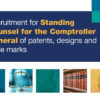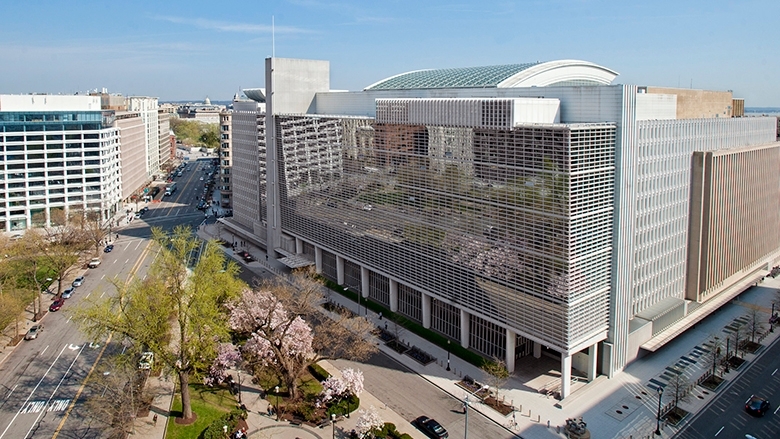Hurricane, Wildfire Season Looms: Are We Ready?
For Sara Oliver, executive in residence in Pratt’s Department of Civil and Environmental Engineering, preparation starts by helping the public understand risk. “The language we use is not helping people understand,” said Oliver. “What would you think the 100-year storm means? It doesn’t mean that a storm happens every 100 years. It represents the statistics: Every year there’s a 1 percent chance.”
Oliver, a civil engineer, believes engineers need to be trained to think about the ambiguity that comes with natural disasters.
“Engineers have been trained to think of the ‘right answer.’ But there is no one answer. They need to be totally uncomfortable.” Oliver said. “We don’t train engineers on that human element. They need to be able to do the storytelling and speak in plain language.”
Oliver directs Duke’s new master of engineering in climate and sustainability engineering – a program she hopes will address this need.
The first cohort of the master’s program will be entering their second year in August. While some students are straight from undergraduate study, other participants come from various careers, including solar power development and risk modeling.
Risk modeling could be of use with issues involving insurance – a pain point that comes up for homeowners after disasters.
“We need new insurance solutions,” said Oliver. “We’re in America, where individual freedom is important. That’s great in some instances. But hurricanes don’t happen to individuals. They happen to communities. I protect my property – but what if my neighbor doesn’t? That’s why we end up with marginalized communities feeling the brunt when a disaster hits.”
During the Los Angeles fires, some homeowners were diligent about cutting back brush around their properties, but others weren’t – contributing to the fires’ spread.
Duke engineer Mark Borsuk uses his expertise in mathematical risk modeling to explore a new type of insurance coverage. Called community-based catastrophe insurance (CBCI), it focuses on the community rather than the individual.
Here’s how CBCI would work: A portion of a household’s insurance would be covered at a community level rather than an individual level – whether by a nonprofit or a financial organization. Rates would be tied in part to the things that the community did to reduce its risks from wildfires, flooding or hurricanes, In California, for example, rates could reflect whether individuals created a buffer zone of protection around their homes, or whether communities practiced fuel abatement (such as removing vegetation) and forest management standards.
A community approach would also take some of the confusion that comes with insurance. With floods, homeowners often don’t know if they need it; and if they need it, it can be hard to get. In fact, it is not unusual for as much as 60 percent of the damage after a flooding event to be from households that were uninsured, said Francis Bouchard, a longtime insurance industry executive and non-resident senior fellow at the Nicholas Institute for Environment, Energy & Sustainability.
Bouchard, Borsuk and other colleagues worked as part of a Bass Connections team to investigate CBCI’s potential. Leading the team were Bouchard and Lydia Olander, program director at the Nicholas institute.
The company Bouchard works for – Marsh McLennan – designed a pilot project for CBCI in New York City. “We worked with a New York City neighborhood philanthropy to identify a flood-exposed, low-income community in Rockaways,” said Bouchard. The pilot focused on a product to pay out to the community if a trigger is met.
“In this case, we have water gauges tracking the rise in water. If it gets to a certain point, it pays, whether there is damage or not,” said Bouchard. “It takes out a lot of the subjectivity and allows you to pay the claim very fast.
“A lot of people don’t (evacuate) because they can’t afford a hotel. Hopefully (with this type of insurance) we would be able to identify early-stage triggers.”
The trigger has not been met yet in this NY case, although the local partner has used the program as the basis for educational classes on disaster preparedness.
Bouchard and Duke colleagues are still looking for communities ready to commit to CBCI. “That’s been the challenge,” said Bouchard. “But the status quo isn’t working.”
At a springtime event co-sponsored by the Duke Center on Risk in Science and Society and Duke RESILE , Bouchard said that the insurance industry also struggles with demonstrating the benefits of what’s known as nature-based solutions. These are efforts to use natural features, such as building wetlands or reforestation to reduce flooding or prescribed burns for wildfires.
Lydia Olander and a team with the Nicholas Institute run Duke’s Nature Activation Hub , which works with a range of organizations to advance nature-based solutions. The group created a roadmap for the Department of the Interior to educate people on these strategies.
The roadmap allows users to search by risk, and provides case studies of communities implementing strategies: such as green space and landscaping techniques to increase water absorption in downtown Houston; removing invasive grasses to reduce wildfire risk in Tucson, Ariz.
Olander said that more communication with local officials, as well as design standards for engineers, can bring nature-based solutions into the mainstream conversation. “We need more awareness,” said Olander.
Olande recently co-authored a publication detailing how federal policy and programs can play an important role in helping communities on disaster mitigation and preparedness – with a breakdown of legislation in Congress.
Disaster experts often refer to disaster management as a cycle (graphic above): initial emergency response, longer-term recovery, and mitigation and preparation measures. In the initial emergency response period, responders and health care personnel jump into action based on the preparation they received, as they did with Hurricane Helene.
The training helps responders rely on their muscle memory when they’re in a stressful situation, said David Marsee, health care preparedness coordinator at Duke – taking some of the immediate decision making out of the equation. That can make a difference in responders’ ability to do their work and work with others.
Marsee coordinates volunteers and schedules trainings for Duke’s State Medical Assistance Team (SMAT), which deployed to western North Carolina after Hurricane Helene, as described in this story .
Sara Houston, a Durham County paramedic, was one of the health care professionals who attended a Duke SMAT training back last December. “As a paramedic, it’s good to network with different health care clinicians and see different perspectives and how we can work together for a common goal,” said Houston, who has been deployed for emergency work during hurricanes Helene and Florence. “If we don’t learn from the previous situation, we’re doomed to fail again. You need to make mistakes to learn.”
Disaster 101: This is the third story in a series that looks at how communities recover from extreme climate disasters and ways Duke experts are focused on rebuilding better.
https://today.duke.edu/2025/06/season-hurricanes-and-wildfires-upon-us-are-we-prepared


